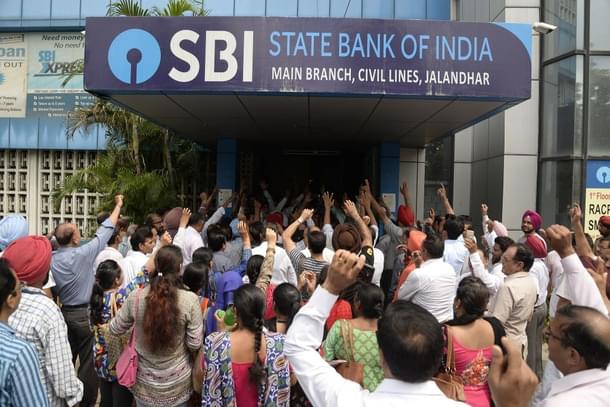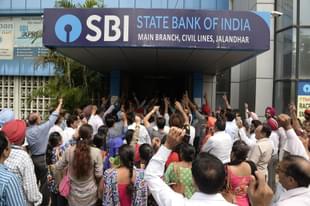Economy
Rebuilding A Healthy Banking System Is Crucial
Brihaspati
Oct 22, 2017, 01:22 PM | Updated 01:22 PM IST
Save & read from anywhere!
Bookmark stories for easy access on any device or the Swarajya app.


India’s Chief Economic Adviser Arvind Subramanian likes to talk about what he calls the ‘Twin Balance Sheet’ problem, an issue he says is key to reviving the economy. The twin balance sheets he refers to are those of private sector companies in India and of the banks.
Both sets of balance sheets are stressed, and the cause of the pain is related. Companies borrowed heavily during the pre-recession boom years but then found demand quickly falling away, leaving them with huge loans to repay and anaemic means to finance them.
The banks, on the other hand, found their hands tied as large portions of their outstanding loans had turned into non-performing assets. This meant they couldn’t lend any more money without risking their financial positions.
In short, banks couldn’t lend any more, and companies couldn’t borrow any more. Whatever money the companies did make was already going into servicing existing loans. Hence, there was no question of new investments.
These are the doldrums into which the Indian economy has sailed.
An IMF View
A recent International Monetary Fund (IMF) working paper titled “Financial Frictions, Underinvestment, and Investment Composition: Evidence from Indian Corporates” places this phenomenon in a theoretical framework, analysing companies’ behaviour in order to find a suitable trend.
The authors – Sonali Das and Volodymyr Tulin – found that investment growth, as measured by aggregate gross fixes capital formation (GFCF), has slowed sharply in the last five years.
Growth in aggregate GFCF was about 12 per cent every year for the decade up to 2011-12. Thereafter, it sank to 3.5 per cent for the next five years.
“Consequently, the investment-to-GDP ratio is estimated to have plummeted from a peak of 33.5 per cent of GDP recorded in 2007/08 to 27 per cent in 2016/17,” the paper says. “The decline took place across most industries, but was more severe in capital intensive sectors.”
These findings are in line with any sort of common financial sense. Its first finding was that companies with higher financial leverage (that is, large outstanding loans) invest less and that this trend is accentuated in companies that are more dependent on external finance.
In other words, companies don’t like to spend money if they have a large amount of debt to repay, and they really don’t like spending if their internal financial streams are not too robust.
Another finding in the paper is that companies less able to pay the interest on their loans are also less likely to make fresh investments.
“We also find that firms with higher leverage are (i) less likely to undertake new investment projects, (ii) less likely to complete investment projects once begun, and (iii) undertake shorter-term investment projects.”
So much then for reviving stalled projects. It’s not happening anytime soon.
Shape Up Or Else
The paper acknowledges that the government has taken several steps to help corporate deleveraging such as introducing asset restructuring mechanisms, strategic debt restructuring and debt-to-equity swaps.
It also takes note of the measures to revive stressed sectors such as road construction, textiles, coal mining, and the enactment of the bankruptcy law.
But it does note that rebuilding a healthy banking system is crucial. The authors say that this should include “continued stringent supervision, following up on corporate governance reforms in public sector banks, and ensuring adequate capital at banks, including through capital injections by the Government of India”.
Basically, they are saying the government should ensure that the public sector banks run efficiently, don’t give loans wantonly, and have enough capital to maintain healthy balance sheets while writing off dead losses. None of this is new and has been said many times before. But coming on the back of empirical research, and from the stables of the IMF, it certainly does carry some weight.
The full paper can be found here.




